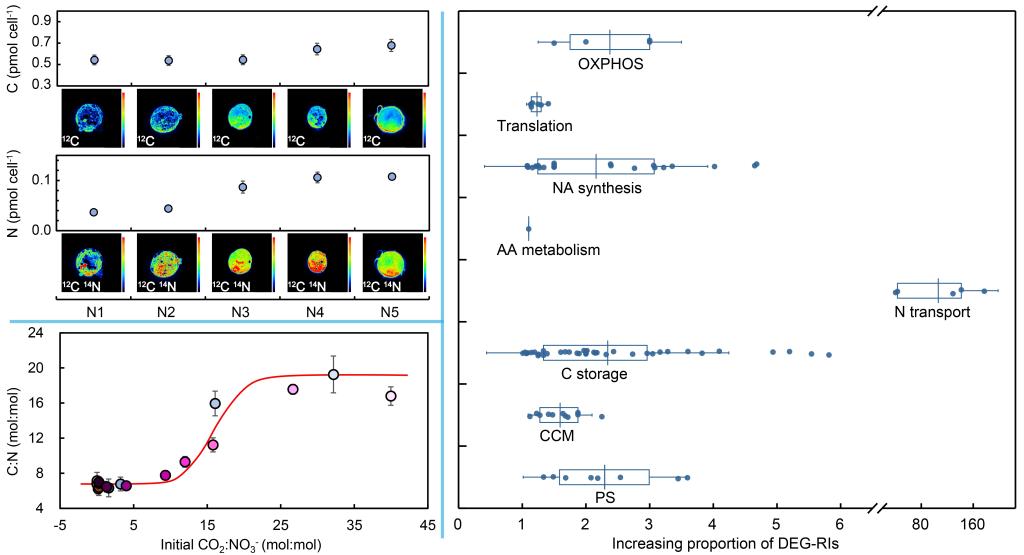Redfield first reported a C:N ratio of approximately 6.6 in marine phytoplankton. However, recent studies show that the phytoplankton C:N ratio has a large range (marine: 6.5-9.9; freshwater: 7.8-10.5) and is species-specific. These studies pose a great challenge to phytoplankton stoichiometric homeostasis, which traditionally refers to their ability to maintain relatively stable elemental composition compared to the changes of external nutrients. The underlying mechanisms of the interaction between phytoplankton stoichiometric homeostasis and nutrient availability need further clarification. Therefore, in the field seven reservoirs in Tianjin, North China, were investigated to understand their phytoplankton C:N ratios, and in the laboratory, Chlamydomonas reinhardtii, as a model organism, was used to investigate its C and N metabolism and relevant physiological factors under different C and N availability. Transcriptome sequencing, nano-scale secondary ion mass spectrometry, and C stable isotope analysis were used to understand cellular C-N metabolism at the molecular level, cellular C-N compartmentation, and C utilization strategy, respectively, in the culture experiment. The main aim of this study was to understand how C-N availability affects the C:N ratio of freshwater phytoplankton at the molecular level.
The results indicated that CO2 limitation had no significant effect on the phytoplankton C:N ratio in either scene, whereas limitation of dissolved inorganic N induced a 35% higher ratio in the field and a 138% higher ratio in the laboratory. Under CO2 limitation, algal CO2-concentrating mechanisms were operated to ensure a C supply, and coupled C-N molecular regulation remained the cellular C:N ratio stable. Under nitrate limitation, differentially expressed gene-regulated intensities increase enormously, and their increasing proportion was comparable to that of the algal C:N ratio; cellular metabolism was reorganized to form a “subhealthy” C-N stoichiometric state with high C:N ratios. In addition, the N transport system had a specific role under CO2 and nitrate limitations. Our study implies that algal stoichiometric homeostasis depends on the involved limitation element and will help to deepen the understanding of C-N stoichiometric homeostasis in freshwater phytoplankton.

This study has been published on Science of the Total Environment. Please find the full text with the link: https://doi.org/10.1016/j.scitotenv.2022.153797